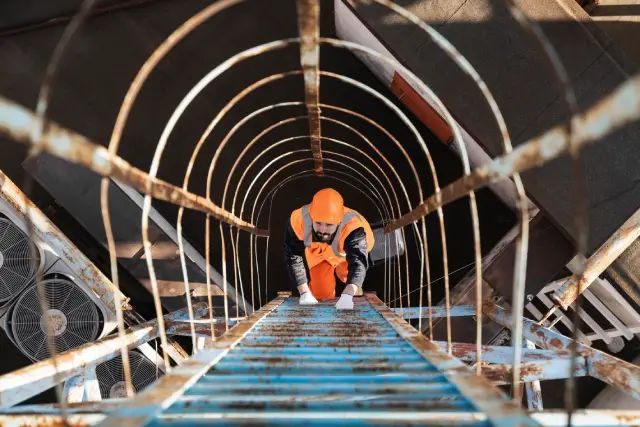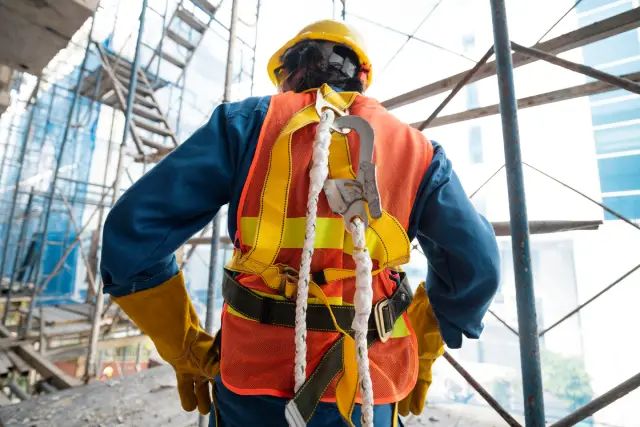In industries where working at heights is routine, ensuring the safety of workers is paramount. Height safety equipment inspection plays a crucial role in mitigating risks. While some hazards may be visible upon inspection, hidden dangers often compromise safety if not addressed promptly. In this article, we’ll explore the importance of inspecting height safety equipment, how to identify hidden hazards and steps to manage them effectively.
Importance of Height Safety Equipment Inspection
Before delving into hidden hazards, it’s essential to understand why inspecting height safety equipment is crucial. Regular inspection helps ensure the equipment works properly, reducing the risk of accidents and injuries. It allows you to detect any wear and tear, damage, or defects that could compromise safety.
Additionally, regulatory standards and guidelines often mandate regular inspection of height safety equipment. Compliance with these regulations keeps workers safe and protects businesses from legal liabilities.
Identifying Hidden Hazards
While some hazards may be evident during visual inspections, others are less conspicuous and may go unnoticed without height safety equipment inspection. Here are some common hidden risks associated with height safety equipment:
Internal Damage
Certain types of damage, such as internal fraying of ropes or cables, may not be visible from the outside. This can weaken the integrity of the equipment and increase the risk of failure during use.
Corrosion
Corrosion can weaken metal components of safety equipment, such as anchors, harness fittings, or carabiners. It often begins internally or in hard-to-reach areas, making it easier to detect with thorough inspection.
Loose or Worn Components
Screws, bolts, and other fasteners can become loose over time, compromising the stability of anchor points and connections. Similarly, straps and webbing may show signs of wear that weaken their strength, posing a hidden risk.
Chemical Exposure
Exposure to chemicals or environmental factors like UV radiation can degrade the materials used in safety equipment, making them less reliable over time. This degradation may only be apparent after careful examination.
Hidden Deformation
Equipment subjected to excessive force or stress may experience deformation, which could compromise its structural integrity. Identifying such deformations often requires close inspection and testing.
Degradation due to Age
Over time, materials used in safety equipment may degrade due to factors such as exposure to sunlight, humidity, or temperature fluctuations. This degradation can weaken the equipment’s strength and structural integrity, making it susceptible to failure during use.
Improper Storage
Storing height safety equipment in unsuitable conditions, such as damp or humid environments, can promote the growth of mould, mildew, or fungi. These contaminants can compromise the integrity of the equipment and pose health risks to workers upon contact.
Overlooked Wear Points
Certain areas of height safety equipment, such as the edges of harness straps or contact points on anchor lines, are prone to accelerated wear due to friction or repeated use. Inspecting these wear points requires close attention to detail to detect signs of damage or deterioration.
Inadequate Training and Usage
Even with properly maintained equipment, accidents can occur if workers are not adequately trained in its proper usage. Improper techniques or misuse of safety equipment, such as tying incorrect knots or securing anchors incorrectly, can create hidden hazards that may lead to accidents.
Hidden Contaminants
Equipment used in industrial settings may come into contact with contaminants such as oil, grease, or chemicals, which can compromise its integrity over time. These contaminants may only be visible after a period of time but can cause deterioration and weaken the equipment if not cleaned and inspected regularly.
Addressing Hidden Hazards
To effectively address hidden hazards in height safety equipment, it’s essential to implement a comprehensive inspection and maintenance program. Here are some steps to consider:
Regular Inspections
Establish a schedule for routine height safety equipment inspection, including harnesses, lanyards, anchors, and connectors. Inspections should be conducted by trained personnel who know what to look for and how to thoroughly assess the equipment’s condition.
Documentation
Keep detailed records of all inspections, including dates, findings, and actions taken. This documentation helps track the condition of the equipment over time and ensures compliance with regulatory requirements.
Testing and Certification
In addition to visual inspections, consider periodic testing and certification of critical safety equipment, such as anchor points and fall arrest systems. This ensures that the equipment meets industry standards and performs as intended in case of a fall.
Prompt Repairs and Replacement
If any hazards or defects are identified during a height safety equipment inspection, promptly address them. This may involve repairing or replacing damaged components, conducting maintenance, or retiring equipment that cannot be safely restored.
Training and Education
Train workers on the importance of height safety equipment inspection and recognising potential hazards. Educated employees are better equipped to identify and report issues for timely resolution.
Regular Cleaning and Maintenance
Establish a schedule for cleaning and maintaining height safety equipment to remove contaminants and prevent deterioration. Use appropriate cleaning agents and methods recommended by manufacturers to ensure thorough cleaning without compromising the integrity of the equipment. Inspect equipment during cleaning sessions to identify any signs of damage or wear.
Enhanced Training Programs
Enhance training programs to include comprehensive instruction on proper equipment usage, maintenance, and inspection procedures. Provide training to familiarise workers with the correct techniques for handling and inspecting height safety equipment. Emphasise the importance of reporting any abnormalities or concerns identified during inspections.
Quality Assurance Checks
Implement quality assurance checks throughout procurement to ensure height safety equipment meets industry standards and specifications. Work closely with reputable suppliers and manufacturers to verify the quality and integrity of the equipment before purchase. Conduct periodic quality audits to assess the performance and reliability of the equipment in real-world conditions.
Investment in Advanced Technologies
Explore the use of advanced technologies, such as non-destructive testing methods or sensor-equipped equipment, to enhance the detection of hidden hazards. Incorporate technologies such as ultrasonic testing, thermal imaging, or RFID tagging to identify internal defects, degradation, or irregularities that may not be visible during visual inspections. Invest in innovative solutions that streamline inspection processes and improve accuracy.

Enrol in Our Height Safety Course!
Ready to prioritise safety in your workplace and ensure the integrity of your height safety equipment? Take the next step towards comprehensive training and certification with the Australian Training Institute. Contact us today to learn more about our height safety equipment inspection course.

